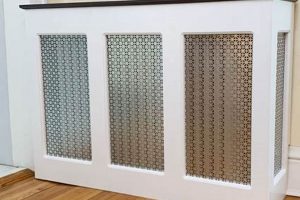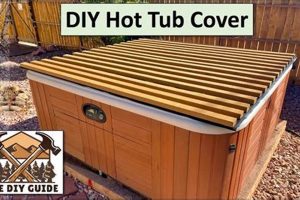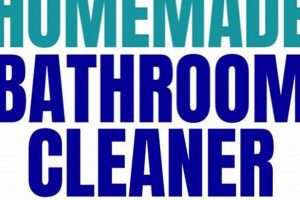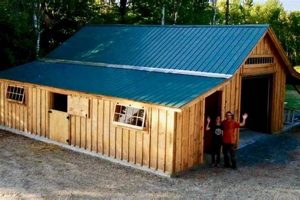Constructing a personal lyophilization apparatus, often involving repurposed equipment and customized components, presents an alternative to commercially manufactured units. This undertaking typically necessitates a vacuum chamber, a refrigeration system capable of achieving sub-freezing temperatures, and a vacuum pump. An example includes modifying a deep freezer with a specialized vacuum lid and connecting it to a pump through appropriate manifolds and control systems.
The motivation behind such projects stems from a desire to reduce capital expenditure, particularly for applications with limited budgets or specialized requirements. Potential advantages include cost savings, customization to specific processing needs, and the satisfaction derived from self-sufficiency. Historically, resourcefulness in equipment building has been a hallmark of scientific exploration and independent research.
Subsequent discussion will delve into the fundamental principles of lyophilization, examining the critical components required for successful operation. This will encompass a detailed analysis of vacuum requirements, temperature management, and potential challenges encountered during construction and operation.
DIY Freeze Dryer
Successful construction and operation of a personal lyophilization system requires careful attention to detail and a thorough understanding of the underlying principles. The following tips are designed to provide guidance on critical aspects of the process.
Tip 1: Vacuum Chamber Integrity: Ensure the vacuum chamber is airtight. Leaks will significantly reduce the effectiveness of the system and potentially damage the vacuum pump. Perform leak testing using a vacuum gauge and leak detection fluid before initiating the freeze-drying process.
Tip 2: Temperature Control Precision: Maintain a stable sub-freezing temperature within the vacuum chamber. Temperature fluctuations can lead to ice crystal growth, negatively impacting the quality of the lyophilized product. Utilize a temperature controller with feedback mechanisms to ensure consistent performance.
Tip 3: Vacuum Pump Selection: Choose a vacuum pump with sufficient capacity to achieve and maintain the required vacuum level. An inadequate pump will result in prolonged drying times and may not achieve the necessary pressure for effective sublimation. Consider a two-stage rotary vane pump for optimal performance.
Tip 4: Moisture Trap Implementation: Incorporate a moisture trap or condenser between the vacuum chamber and the pump. This prevents water vapor from reaching the pump, which can cause damage and reduce its lifespan. The trap should be cooled to a temperature lower than the product being dried.
Tip 5: Sublimation Monitoring: Closely monitor the sublimation process using a vacuum gauge and a temperature sensor within the product being dried. A gradual decrease in pressure indicates that sublimation is occurring. Once the pressure stabilizes, the primary drying phase is complete.
Tip 6: Secondary Drying Optimization: After primary drying, increase the temperature slightly to remove any remaining unfrozen water molecules. This secondary drying phase is crucial for achieving long-term product stability. However, avoid exceeding the product’s collapse temperature.
Tip 7: Proper Ventilation: Ensure adequate ventilation around the vacuum pump to prevent overheating. Overheating can damage the pump and reduce its efficiency. Consider using a fan to improve airflow around the pump motor.
Key takeaways include prioritizing vacuum integrity, precise temperature regulation, and effective moisture management. These elements are critical for achieving successful lyophilization in a constructed system.
The subsequent section will address common troubleshooting issues encountered during operation and provide solutions for optimizing system performance.
1. Component Selection
Component selection directly dictates the performance and efficacy of a constructed lyophilization apparatus. The chosen components influence the vacuum level achievable, the temperature control precision, and ultimately, the success of the lyophilization process. Inadequate component selection introduces limitations and potential failures within the system. For instance, the selection of a vacuum pump with insufficient capacity directly translates to a diminished vacuum level, which in turn reduces the sublimation rate and extends drying times. Similarly, opting for a refrigeration system lacking the capacity to maintain sufficiently low temperatures impedes proper ice crystal formation and sublimation, leading to compromised product quality.
The impact of component selection is evident in various aspects of the lyophilization process. The material of the vacuum chamber, for example, influences its ability to withstand the pressure differential and maintain a proper seal. Stainless steel is commonly favored for its durability and resistance to corrosion, ensuring long-term functionality. Furthermore, the selection of appropriate valves, fittings, and tubing is essential for maintaining vacuum integrity and preventing leaks. An example of poor component selection would be using plastic tubing, which is permeable to air and could potentially contaminate the product with plastic leaching when exposed to the pressure and temperature changes involved. Careful consideration of material compatibility and pressure ratings is therefore paramount.
In summary, component selection constitutes a foundational element in the construction and operation of a functional lyophilization system. Informed choices regarding the vacuum pump, refrigeration system, chamber material, and associated fittings are essential for achieving the necessary vacuum levels, maintaining stable low temperatures, and ensuring the overall success of the lyophilization process. Neglecting this critical aspect can result in diminished performance, compromised product quality, and potential system failure. These choices define the operational capabilities and overall cost-effectiveness of a self-constructed lyophilization unit.
2. Vacuum Attainment
Vacuum attainment is paramount for effective operation of a constructed lyophilization apparatus. The ability to achieve and maintain a suitably low pressure environment within the system dictates the rate of sublimation and, consequently, the efficiency of the entire freeze-drying process. Without adequate vacuum, sublimation is hindered, prolonging drying times and potentially degrading product quality.
- Pump Selection and Capacity
The choice of vacuum pump is critical. Smaller systems frequently utilize rotary vane pumps, characterized by their ability to reach pressures suitable for water sublimation. Pump capacity, measured in cubic feet per minute (CFM) or liters per second (L/s), must be sufficient to evacuate the
chamber volume effectively and maintain a low-pressure environment despite minor leaks or outgassing from the product being dried. An undersized pump struggles to achieve the required vacuum, extending drying times and increasing energy consumption. The pump must be oil-sealed or diaphragm to handle the water vapor without damaging internal components. - Chamber Sealing and Leak Detection
Maintaining a tight seal around the vacuum chamber is essential. Any leaks, however small, compromise the vacuum level and reduce system efficiency. Common leak points include door seals, valve connections, and tubing fittings. Silicone or rubber gaskets are frequently employed to create airtight seals. Leak detection methods include the use of vacuum gauges to monitor pressure changes over time and the application of leak detection fluids around potential leak points to identify the source of vacuum loss.
- System Material and Outgassing
The materials used in the construction of the lyophilization apparatus influence the rate of outgassing. Certain materials, such as plastics and some metals, tend to release trapped gases under vacuum conditions, increasing the load on the vacuum pump and hindering the achievement of the desired low-pressure environment. Stainless steel is a preferred material for vacuum chambers due to its low outgassing properties. Prior to operation, a constructed system often requires a period of “pump-down” to remove residual gases from the system materials, improving vacuum attainment.
- Vacuum Measurement and Control
Accurate vacuum measurement is necessary for monitoring the lyophilization process and ensuring optimal operating conditions. Vacuum gauges, such as Pirani or capacitance manometers, provide real-time pressure readings. Closed-loop control systems, incorporating a vacuum sensor and a vacuum regulator, automatically adjust the pump speed or valve openings to maintain a target vacuum level. Precise vacuum control enhances the efficiency of the sublimation process and contributes to more consistent and predictable results.
Vacuum attainment and all its aspects are not simply a technicality but a fundamental pillar upon which the efficacy of the constructed lyophilization unit rests. Optimizing the vacuum environment translates directly to more efficient sublimation, improved product preservation, and overall enhancement of the do-it-yourself lyophilization endeavor. These facets are interrelated and require a comprehensive approach to achieve desired result.
3. Temperature Management
Temperature management is a cornerstone of successful operation for any self-constructed lyophilization apparatus. Lyophilization, or freeze-drying, relies on the sublimation of ice, a process critically dependent on maintaining specific temperature gradients within the system. Insufficiently low temperatures preclude proper ice formation, while temperatures exceeding the product’s collapse point lead to structural damage and reduced quality. Therefore, precise temperature control is not merely desirable but essential for achieving desired results. For example, if attempting to lyophilize heat-sensitive proteins, maintaining a consistently low temperature throughout the process, often below -20C, is crucial for preserving their biological activity.
The challenges in temperature management within a constructed system stem from several factors. Effective cooling of the sample and condenser requires a robust refrigeration system, often adapted from existing freezers or utilizing specialized cooling units. Precise temperature regulation necessitates accurate sensors and control mechanisms. The placement of temperature probes is crucial; they must accurately reflect the temperature of the product being dried and the condenser, enabling informed adjustments to the cooling system. A real-world example illustrates this point: inadequate insulation around the vacuum chamber leads to heat influx, causing temperature instability and uneven sublimation, ultimately compromising product uniformity. Addressing these challenges requires careful consideration of insulation, cooling power, sensor accuracy, and control algorithm responsiveness.
In summary, temperature management is inextricably linked to the functionality and effectiveness of a self-built lyophilization unit. Maintaining a stable, appropriately low temperature during freezing and subsequent sublimation is critical for preserving the integrity of the product. While cost-effective solutions may exist, compromising on temperature control often results in suboptimal outcomes. Therefore, careful attention to insulation, refrigeration capacity, sensor placement, and control system design is paramount for realizing the full potential of a constructed system and achieving reliable and reproducible lyophilization results. The interplay of all these factors are crucial in the pursuit of building a functioning machine.
4. Sublimation Rate
Sublimation rate, a critical parameter in the operation of a constructed lyophilization apparatus, directly influences the duration and efficacy of the drying process. It represents the quantity of ice transitioning directly into vapor per unit of time. Several factors intrinsic to the system’s design and operational parameters govern sublimation rate, including vacuum level, temperature gradient, and surface area of the frozen material. Lower vacuum pressures accelerate sublimation by reducing the partial pressure of water vapor, thereby facilitating its removal from the frozen matrix. Conversely, an insufficient vacuum impedes sublimation, prolonging drying times and potentially leading to product degradation. Real-world examples demonstrate this effect; a system operating at 100 mTorr will exhibit a demonstrably faster sublimation rate than an identical system at 500 mTorr, assuming all other variables are held constant. The practical significance of understanding sublimation rate lies in its ability to optimize process parameters, minimizing drying time while preserving product integrity.
Further analysis reveals the complex interplay between sublimation rate and product characteristics. A higher sublimation rate is not always desirable, particularly for materials susceptible to collapse or eutectic melting. Uncontrolled sublimation can result in structural damage to the product, leading to decreased stability or altered reconstitution properties. Lyophilizing heat-sensitive biological materials, such as enzymes or vaccines, requires careful modulation of sublimation rate to prevent denaturation or loss of activity. Advanced systems employ temperature ramping techniques, gradually increasing the temperature to maintain an optimal sublimation rate without exceeding critical temperature thresholds. These techniques illustrate the practical application of sublimation rate control in preserving product quality and efficacy.
In conclusion, comprehension of sublimation rate and its influencing factors is essential for maximizing the performance of a do-it-yourself lyophilization unit. Achieving an optimal sublimation rate balances the need for efficient drying with the preservation of product integrity. Challenges in controlling sublimation rate often arise from limitations in vacuum pump capacity, temperature control accuracy, or system design flaws. Overcoming these challenges necessitates careful component selection, meticulous system construction, and a thorough understanding
of the lyophilization process. Addressing these factors contributes to more efficient and reliable lyophilization, ultimately yielding higher quality, shelf-stable products.
5. Product Stability
Product stability, defined as the maintenance of desired physical, chemical, microbiological, and therapeutic properties throughout the storage period, constitutes a critical endpoint in lyophilization. The efficacy of a self-constructed freeze-drying apparatus hinges on its ability to deliver products exhibiting long-term stability comparable to those processed in commercially manufactured equipment.
- Residual Moisture Content
Residual moisture content, the amount of water remaining in the lyophilized product post-drying, directly impacts stability. Elevated moisture levels promote degradation reactions, such as hydrolysis and oxidation, accelerating product spoilage. Optimal values typically fall below 1-3%, achievable through rigorous process control. A poorly calibrated self-constructed system may struggle to achieve these levels consistently, leading to reduced shelf life. Monitoring this is key to evaluating your machine.
- Collapse Temperature Exceedance
Exceeding the product’s collapse temperature during sublimation results in structural damage, manifesting as shrinkage and loss of surface area. This compromises reconstitution properties and reduces stability by increasing surface area exposure to oxygen and moisture. A “diy freeze dryer” lacking precise temperature control may inadvertently cause collapse, impacting the long-term viability of the lyophilized material.
- Oxidation Prevention
Oxidation reactions, particularly problematic for unsaturated lipids and certain vitamins, degrade product quality and reduce shelf life. Exposure to oxygen during processing or storage accelerates oxidation. Employing techniques such as nitrogen purging or vacuum packaging minimizes oxygen exposure, enhancing stability. A well-designed lyophilization system facilitates these protective measures. The machine must have proper nitrogen injection capabilities.
- Container Integrity and Storage Conditions
The choice of packaging material significantly influences product stability. Permeable containers allow moisture and oxygen ingress, accelerating degradation. Impermeable materials, such as glass vials or foil pouches, provide a superior barrier. Proper storage conditions, including temperature and humidity control, further enhance stability. Even a perfectly lyophilized product will degrade rapidly if improperly packaged or stored. It is of upmost importance that proper storage are observed.
Achieving optimal product stability requires a comprehensive approach that addresses all stages of the lyophilization process, from formulation to packaging and storage. A do-it-yourself freeze dryer can contribute to product stability if carefully constructed, monitored, and validated. However, failure to adequately control critical parameters jeopardizes long-term product viability. Therefore, rigorous testing and quality control measures are paramount when utilizing a self-constructed apparatus. The diy approach must be combined with good science.
Frequently Asked Questions About Constructed Lyophilization Systems
The following questions address common inquiries and concerns regarding the construction and operation of personal lyophilization systems.
Question 1: What is the typical cost associated with building a “diy freeze dryer”?
Cost varies significantly depending on the chosen components, availability of repurposed equipment, and the level of automation incorporated into the design. A rudimentary system may be assembled for a few hundred dollars, while a more sophisticated setup with advanced control features could exceed several thousand. A detailed cost analysis is essential prior to initiating construction.
Question 2: What are the primary safety considerations when operating a “diy freeze dryer”?
Safety concerns revolve around vacuum implosion risks, electrical hazards associated with refrigeration and vacuum pump systems, and potential exposure to hazardous materials being lyophilized. Proper grounding, pressure testing, and adherence to relevant safety protocols are paramount. A safety audit by a qualified professional is highly recommended before operation.
Question 3: How effective is a constructed system compared to a commercially manufactured unit?
Effectiveness depends on the quality of components, precision of construction, and adherence to proper operating procedures. A well-designed and carefully operated constructed system can achieve comparable results to commercial units, particularly for specific applications. However, commercial units offer advantages in terms of reliability, automation, and validation.
Question 4: What level of technical expertise is required to build and operate a “diy freeze dryer”?
Successful construction and operation require a fundamental understanding of thermodynamics, vacuum technology, refrigeration principles, and electrical systems. Prior experience in equipment building, troubleshooting, and basic scientific methodology is highly beneficial. Seeking guidance from experienced individuals is strongly advised.
Question 5: What legal or regulatory considerations apply to the use of a “diy freeze dryer”?
Legal and regulatory requirements vary depending on the intended application and location. Lyophilizing materials for human consumption or pharmaceutical use may be subject to stringent regulations, necessitating adherence to Good Manufacturing Practices (GMP) and other relevant standards. Compliance with local building codes and safety regulations is also essential.
Question 6: How can the performance of a “diy freeze dryer” be validated?
Performance validation involves demonstrating that the system consistently meets predetermined specifications, such as achieving a specific vacuum level, maintaining stable temperatures, and producing lyophilized products with acceptable residual moisture content. Validation protocols typically include performance qualification, operational qualification, and process qualification. A documented validation report is essential for regulatory compliance and quality assurance.
Careful planning, meticulous construction, and adherence to rigorous testing protocols are vital for the successful implementation of a constructed lyophilization system. Understanding associated risks and limitations is crucial.
The subsequent section will explore advanced techniques for optimizing the performance of personal lyophilization systems.
DIY Freeze Dryer
This exploration of “diy freeze dryer” systems has illuminated the complexities inherent in constructing and operating a functional lyophilization apparatus. Key considerations include component selection, vacuum attainment, temperature management, sublimation rate control, and product stability. Success hinges on a thorough understanding of these interdependencies, rigorous attention to detail, and adherence to sound scientific principles.
The pursuit of self-sufficiency in lyophilization presents both opportunities and challenges. While cost savings and customization are potential benefits, safety concerns, technical expertise requirements, and regulatory considerations demand careful evaluation. Individuals considering a “diy freeze dryer” project must weigh these factors judiciously, prioritizing
safety and product quality above all else. The future of such endeavors lies in continued innovation and a commitment to rigorous validation protocols.






![DIY Build: Circular Saw Crosscut Jig PDF Plans [Free] The DIY Hub: Creative Crafts, Repairs & Life Hacks DIY Build: Circular Saw Crosscut Jig PDF Plans [Free] | The DIY Hub: Creative Crafts, Repairs & Life Hacks](https://craftingdiycenter.com/wp-content/uploads/2025/07/th-5916-300x200.jpg)
